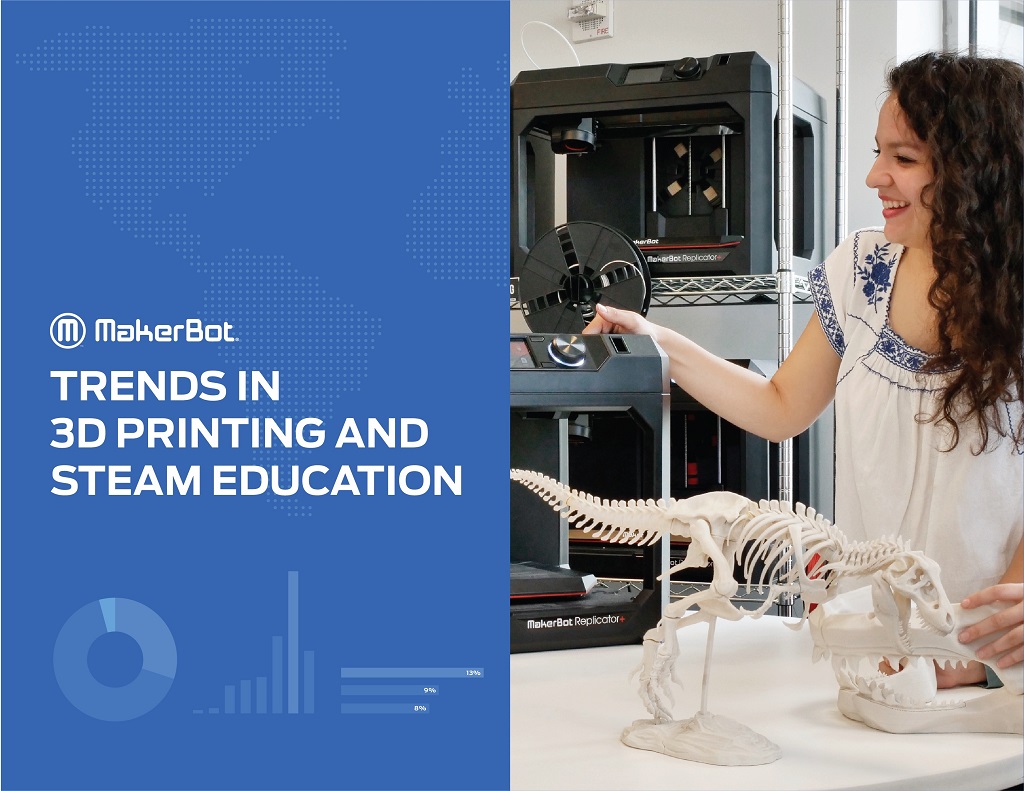
MakerBot recently released a report analyzing the use of 3D printing in education and its application across grade levels.
The Report
Shortly after releasing a broader 3D Printing Trends Report for 2020, MakerBot is back with a new report focusing on education.
Their report is based on the responses of over 1,000 educational professionals from within MakerBot’s global network this summer. 60% of respondents were based in North America, while 15% were from Asia, 14% were from Europe, 8% were from South America, 2% were from Oceania, and 2% were from Africa. The surveyed professionals teach a versatile range of topics from 3D printing itself, to art and design, mathematics, engineering, language studies, history, and more.
It was found that 63% of respondents use 3D printing to better prepare their students for the workforce. As it turns out, success requires more than just a 3D printer. In fact, the surveyed professionals say that they want the whole ecosystem of 3D printing resources to achieve their educational goals.
65% of all respondents claimed that online training programs would further improve their ability to implement 3D printing technology within the classroom, while 63% and 56% of respondents agreed that lesson plans and educational webinars would also be beneficial resources, respectively.
The Significance Of The Report
MakerBot CEO Nadav Goshen explains:
“We are at a pivotal moment in education. We have seen the use of 3D printing in education increase steadily over the past years due, in part, to the availability of more products and services geared toward teachers and students. Affordable and easy-to-use 3D printers, training and certification programs, integrated lesson plans, and online 3D printing resources have made the technology attractive to many educational institutions. In addition, working with 3D printers can help students develop practical and usable skills that can be used outside of the classroom.”
The report goes into further detail, providing statistics to prove that authentic learning experiences are becoming a popular new teaching method, teaching STEAM subjects requires resources that schools may not have, 3D printing is widely used to develop practical skills that can be used beyond the classroom, and that costs, reliability, and ease-of-use play important roles in decision-making.
Goshen continues his statement by saying:
“The importance of 3D printing in education cannot be overstated. The report revealed the shift from traditional learning environments to more interactive and engaging approaches. By teaching visualization, design and creation via 3D printing, 3D printing opens up opportunities for students and brings ideas to life,”
A Brief Overview Of The Report
This report was clearly created with the intention of identifying the reach of 3D printing inside the classroom. I think that what it highlights is that 3D printing isn’t all about the printer. There’s so much more to learn about it.
In terms of the company MakerBot itself, I’m pleased that they took the initiative to put together this report, because the company has for a few years now been targeting both the educational and professional markets. Naturally, it makes them a great candidate to be curious about the spectrum of people involved in educational 3D printing.
Finally, as a student myself, it’s great to learn about all the different applications the technology has in practically every industry at such a young age, because I know that no matter what field I go into, there’s bound to be a need for it somewhere. I genuinely believe that every student across the globe deserves this opportunity and if MakerBot continues updating their report, I definitely want to see the statistics go up.
Via MakerBot
